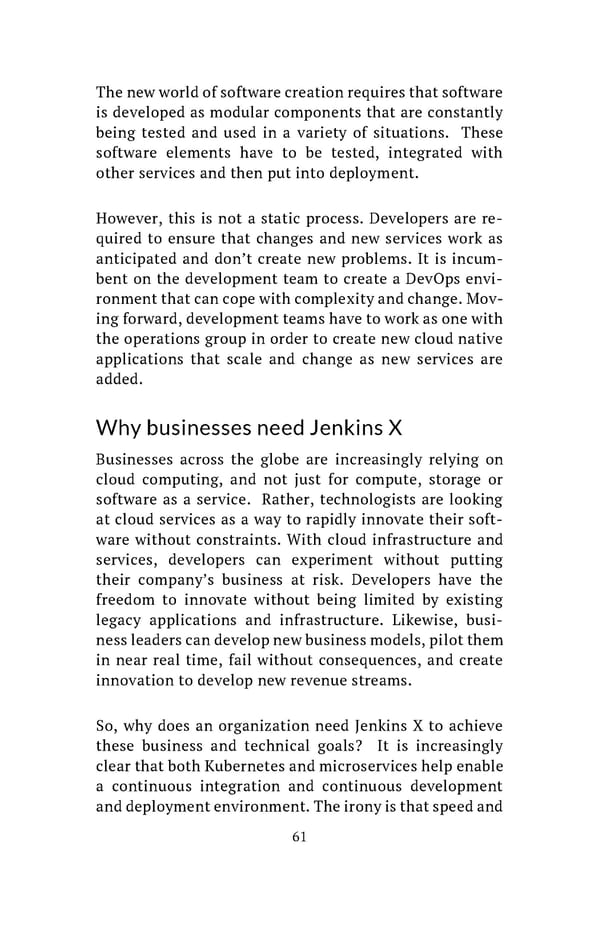The new world of software creation requires that software is developed as modular components that are constantly being tested and used in a variety of situations. These software elements have to be tested, integrated with other services and then put into deployment. However, this is not a static process. Developers are re- quired to ensure that changes and new services work as anticipated and don’t create new problems. It is incum- bent on the development team to create a DevOps envi- ronment that can cope with complexity and change. Mov- ing forward, development teams have to work as one with the operations group in order to create new cloud native applications that scale and change as new services are added. Why businesses need Jenkins X Businesses across the globe are increasingly relying on cloud computing, and not just for compute, storage or software as a service. Rather, technologists are looking at cloud services as a way to rapidly innovate their soft- ware without constraints. With cloud infrastructure and services, developers can experiment without putting their company’s business at risk. Developers have the freedom to innovate without being limited by existing legacy applications and infrastructure. Likewise, busi- ness leaders can develop new business models, pilot them in near real time, fail without consequences, and create innovation to develop new revenue streams. So, why does an organization need Jenkins X to achieve these business and technical goals? It is increasingly clear that both Kubernetes and microservices help enable a continuous integration and continuous development and deployment environment. The irony is that speed and 61
 Building Cloud Native Apps Painlessly Page 67 Page 69
Building Cloud Native Apps Painlessly Page 67 Page 69